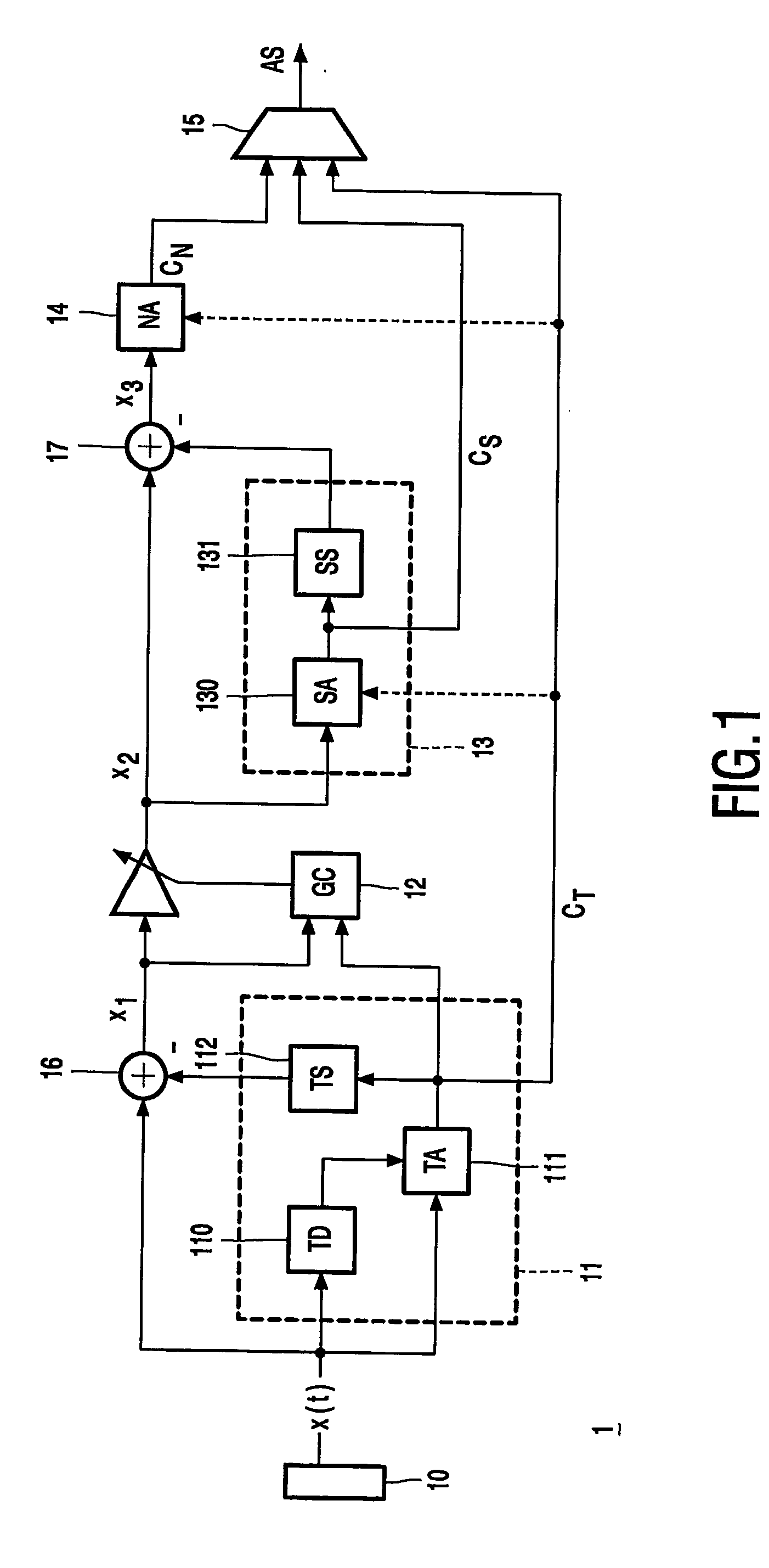Audio coding
- Summary
- Abstract
- Description
- Claims
- Application Information
AI Technical Summary
Benefits of technology
Problems solved by technology
Method used
Image
Examples
Embodiment Construction
[0019] Preferred embodiments of the invention will now be described with reference to the accompanying drawings wherein like components have been accorded like reference numerals and, unless otherwise stated perform a like function. In a preferred embodiment of the present invention, the encoder 1 is a sinusoidal coder of the type described in PCT Patent Application No. WO 01 / 69593, FIG. 1. The operation of this prior art coder and its corresponding decoder has been well described and description is only provided here where relevant to the present invention.
[0020] In both the prior art and the preferred embodiment, the audio coder 1 samples an input audio signal at a certain sampling frequency resulting in a digital representation x(t) of the audio signal. The coder 1 then separates the sampled input signal into three components: transient signal components, sustained deterministic components, and sustained stochastic components. The audio coder 1 comprises a transient coder 11, a ...
PUM
 Login to view more
Login to view more Abstract
Description
Claims
Application Information
 Login to view more
Login to view more - R&D Engineer
- R&D Manager
- IP Professional
- Industry Leading Data Capabilities
- Powerful AI technology
- Patent DNA Extraction
Browse by: Latest US Patents, China's latest patents, Technical Efficacy Thesaurus, Application Domain, Technology Topic.
© 2024 PatSnap. All rights reserved.Legal|Privacy policy|Modern Slavery Act Transparency Statement|Sitemap



